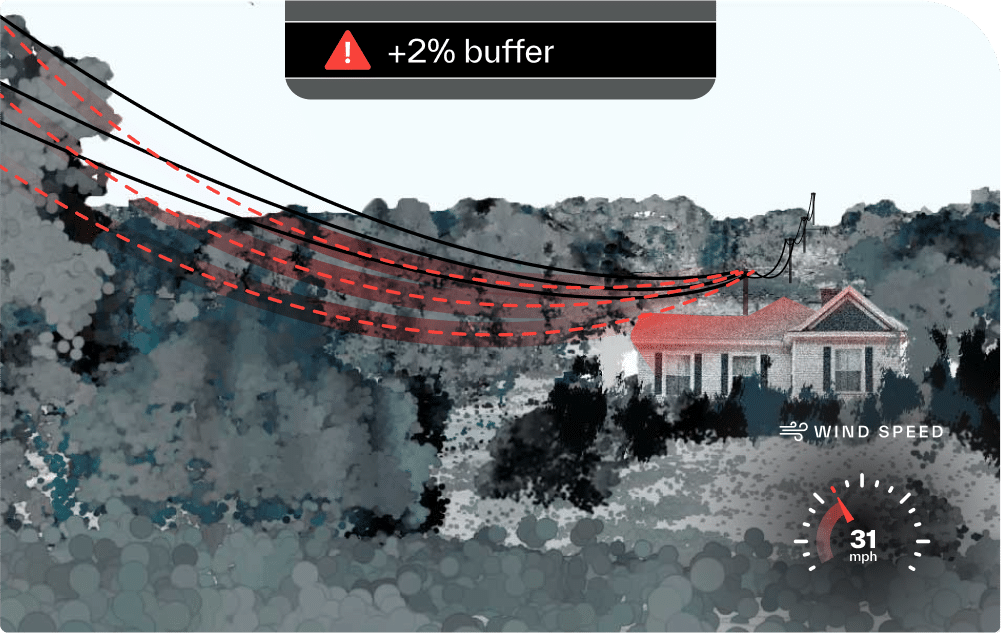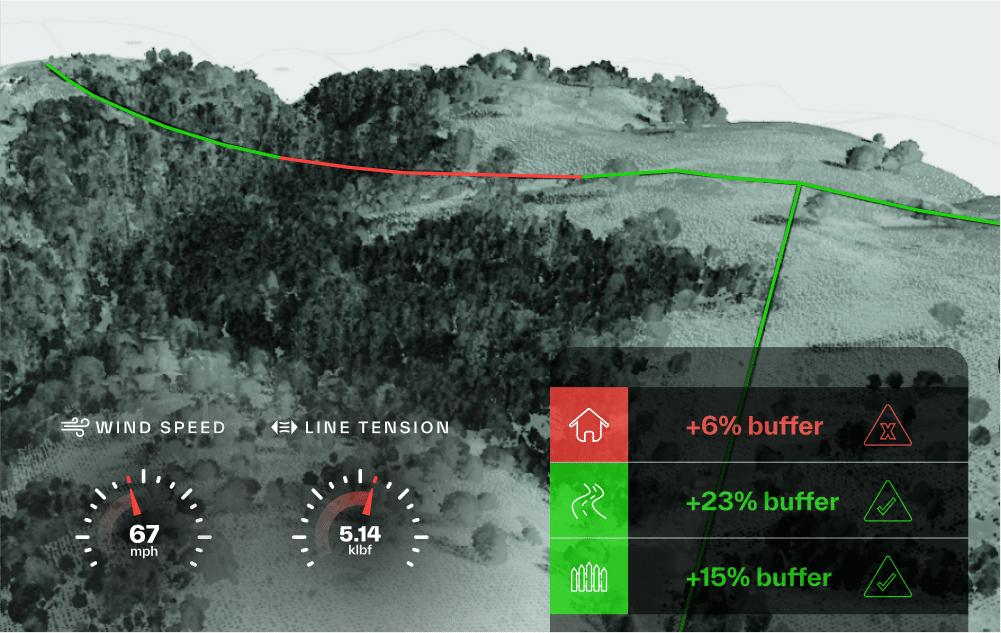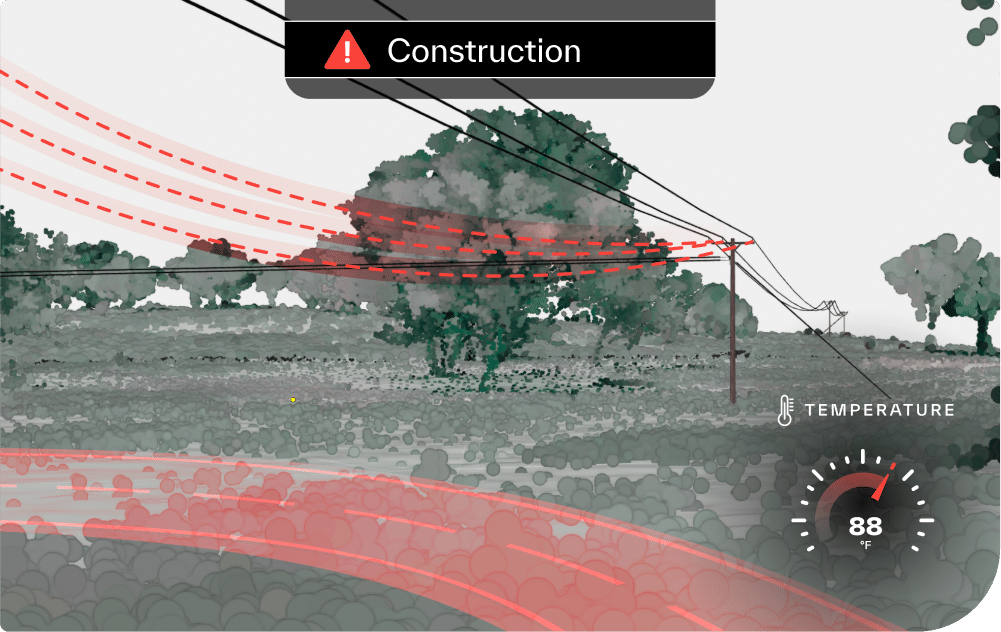Clearance Analysis
Stay clear of every hazard in your network
Your network conditions might be unpredictable, but your ability to comply with clearance standards doesn’t have to be. Maintain situational awareness across all of your assets and what they’re in danger of touching at all times, right now and across a range of possible scenarios. Simulate network stressors, from extreme weather to vandalism, with a digital network model that empowers you to understand how your assets will respond and prepare accordingly.

Pinpoint any current and future clearance hazard, from third-party assets like man-made structures, telco, and private cables to environmental features such as ground elevation and vegetation and your own assets like line crossings. Prevent more dangerous situations than the naked eye can see at any given time with early, network-wide risk detection.

Assess different clearance requirements for assets near roads, pathways, railways, or other surrounding features and ensure your network can keep up with evolving safety standards. Ensure your network meets legal and regulatory requirements to avoid violations and raise the safety bar even higher by experimenting with custom clearance thresholds that reflect your best judgment.

Identify which circumstances present the greatest threat to your assets by simulating a range of scenarios using your digital network model. Automated, network-wide clearance risk assessment means you can improve safety without a proportionate increase in field visit-related safety incidents. Target field visits effectively to prioritize removing your most likely clearance hazards instead of top-to-bottom manual surveys that are costly to plan and execute.

Learn how to find out, fast.